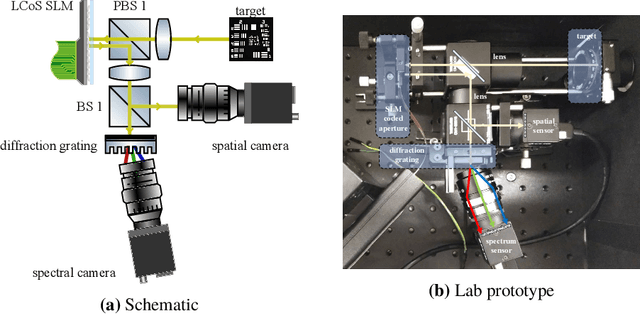On Space-spectrum Uncertainty Analysis for Coded Aperture Systems
Paper and Code
Nov 16, 2019



We introduce and analyze the concept of space-spectrum uncertainty for certain commonly-used designs for spectrally programmable cameras. Our key finding states that, it is impossible to simultaneously capture high-resolution spatial images while programming the spectrum at high resolution. This phenomenon arises due to a Fourier relationship between the aperture used for obtaining spectrum and its corresponding diffraction blur in the (spatial) image. We show that the product of spatial and spectral standard deviations is lower bounded by {\lambda}/4{\pi}{\nu_0} femto square-meters, where {\nu_0} is the density of groves in the diffraction grating and {\lambda} is the wavelength of light. Experiments with a lab prototype for simultaneously measuring spectrum and image validate our findings and its implication for spectral filtering.
 Add to Chrome
Add to Chrome Add to Firefox
Add to Firefox Add to Edge
Add to Edge